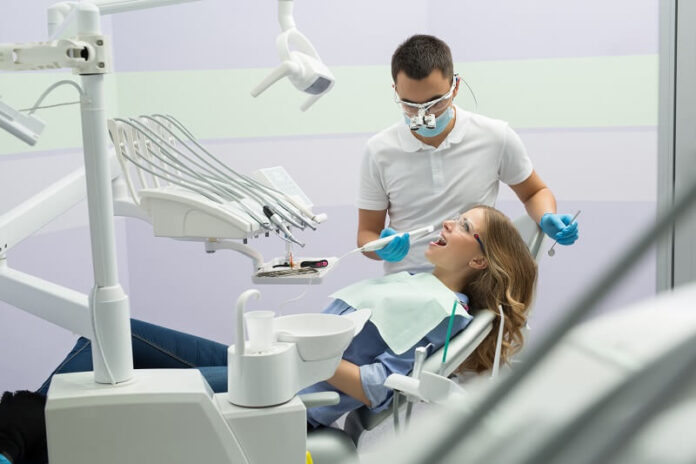When will my baby get his First Tooth?
The first tooth breaking is a milestone for every baby and a very memorable moment for all parents.
I too was eagerly waiting for that day to saw Rithvik’s first set of brand new teeth. But at the same time, I got very much worried hearing about teething pain told by my mom and others.
All I kept thinking about over and over was ‘how is my little one going to tolerate the teething pain? Does teething really hurt him?’. I started surfing about teething and collected a few home remedies to relieve the teething pain.
Much to my surprise, when Rithvik cut his first tooth at his seventh month has not shown much discomfort as we expected. He tried to bite on everything he gets on his hands, pulled his ear, drooled (excess salivation), and got red rashes on his cheek.
What is Teething in Babies?
Tooth breaking through the gum line which occurs between the ages of four months to nine months is called teething.
Our babies’ tooth development begins when they are in the womb. Each baby is different; some will develop at early around four months while others develop very late around one year or so. It all depends on the genetic transition.
It is said that “if you or your spouse had an early teething/late teething your child may also have the same teething time”
Babies have their full set of 20 baby teeth (called by other names like primary teeth/deciduous teeth/milk teeth) by the age of three years. Normally, two lower central incisors appear first, then the upper central and upper side ones.
Common Signs and Symptoms of Teething in Babies:
The teething symptoms appear in babies during the first 12 months. It is often called as eruption when the baby teeth appear through the gum line. The two front teeth are the first to appear during the stage of teething. Then slowly and steadily babies develop other teeth such as central incisors, lateral incisors, flat-surfaced back teeth, and upper and lower molars till the age of 33 months. By reaching the age of three years, your child will develop a full set of 20 primary teeth.
There are judgments like teething cause pain, common cold, fever, and diarrhea, but there is no scientific evidence to support any connection between these symptoms and teething.
Some of the most common symptoms of teething in babies are:
- Sore gums
- Drooling
- Rubbing face or pulling hair
- Not eating properly
- Trying to bite on everything they can get in their hands
- Irregular sleep
- Rashes on cheeks/chin
The teeth develop until the age of 3 years are also called as the ‘milk teeth’, which are the temporary teeth of babies. From 6 six years onwards, the temporary teeth start to fall off and the adult or permanent teeth start to appear. The front two teeth of the lower jaw are the first ones to fall off during this stage. However, this stage can be very discomforting and painful for your child. The parents need to know how to deal with your child during this stage. The important tips include:
- Make this process a positive thing for your child and reassure them that they will have permanent teeth soon.
- Use pain-relieving and anti-inflammatory medications to help your child get some relief from the pain.
- In reference to the tooth fairy, offer a coin to your child in exchange for losing a tooth. This might help in comforting your little one.
The Timeline of Baby Teeth
The eruption is the stage when your baby begins teething or the temporary teeth begin to break through the gums. During the first three years for baby develop different types of teeth such as:
- Incisors: incisors the front teeth located in the upper and lower jaw. The incisors have a thin cutting edge that is responsible for cutting the food together.
- Canines: canines are the pointed teeth on each side of the incisors on both upper and lower jaws. These are responsible for tearing the food.
- Premolars: The premolars have the appe4arance of a flat surface that helps in crushing the food.
- Molars: Molars are much broader with large flat surfaces as compared to the premolars that help in grinding food.
The eruption of a tooth varies from child to child. The normal timeline of baby teeth would look like this:
Six to ten months: at this stage, the front two teeth called incisors to appear in the lower jaw.
Eight to twelve months: at this stage, the front two teeth called incisors to appear in the upper jaw.
Nine to thirteen months: At this stage, the top lateral incisors appear on each side of the central incisors.
Ten to sixteen months: At this stage, the bottom lateral incisors appear on each side of the central incisors.
Sixteen to twenty-two months: At this stage, the top canines appear on the sides of the incisors.
Seventeen to twenty-three months: At this stage, the bottom canines appear on the sides of the incisors.
Thirteen to nineteen months: the top first molars appear next to the canines.
Fourteen to eighteen months: the bottom first molars appear next to the canines.
Twenty- three to thirty-one months: the bottom second molars appear next to the canines.
Twenty-five to thirty-three months: the top second molars appear next to the canines.
Safe Home Remedies For Teething in Babies:
- Clean fingers or washed cloth:
Gently massage the sore gum with your clean fingers or a soft washed wet cloth.
Rithvik loves to bite our fingers. So whenever he seems very cranky we washed our hands with sanitizer and gave him our fingers to bite 😛
- Sugar-free teething rusk or biscuits:
Offer your baby some rusks/biscuits which provide relief for your baby’s sore gum.
Go for homemade rusks or the organic teething rusks and biscuits available in the market. You can also read the whole wheat homemade biscuits for toddlers and kids.
- Chopped and chilled vegetables/fruits:
Offer chilled and cubed apple, pears, banana, carrots, cucumber, etc. to your baby to munch on.
- Cold spoon:
Clean a steel spoon, keep it in the freezer for a few minutes. Give this to your baby to bite.
- Breastfeeding:
If your baby is on breastfeeding go on feeding your baby quite often. It really works!
Rithvik cut his first tooth in his 6th month. I used to feed him a lot during that time and he seemed very comfortable as breastfeeding soothes the baby.
- Wipe the excess saliva:
Wipe the saliva with a clean cloth or tissue which drools out from your baby’s mouth frequently otherwise red rashes will appear on their cheek and chin.
- Baby teether:
Give your baby some a good quality teether to bite upon.
Wooden teethers, rubber teethers, silicone teethers and so many varieties of teethers are available in the market. Go for a good brand when it comes to the teether.
To be honest my little one hates teether and whenever we gave him he just threw it away :P.
- Baby sippers:
If your baby has started feeding in sippers, offer some fresh cold juices in it. The best option will be orange juice.
- OTC pain reliever:
This should be your last choice if everything fails.
Try an over-the-counter remedy if your baby is especially cranky. Always consult your pediatrician or pharmacist before going for any OTC pain reliever.
Alternative Remedies For Teething in Babies as a Mom I Don’t Prefer:
- Teething Necklace (Amber/Baltic Amber):
Teething necklaces consist of beads made from the amber which is a fossilized plant resin from the Baltic sea.
For marketing purposes, sellers claim that when amber touches the skin it releases healing oils, succinic acid, etc which get absorbed via the skin into the bloodstream and thus helps in teething pain.
Many parents have given positive reviews about these necklaces that when worn by babies it really calmed their babies.
Whatever the case, I personally suggest not to use amber as it could cause choking and strangulation in babies.
Still, anyone using or planning to use teething necklaces in the future for their babies give your active supervision at all times when worn.
Teething gels provide quick relief from teething pain in babies. Avoid teething medications that contain the pain reliever benzocaine.
Benzocaine is a numbing agent used in teething gels.
It is reported in many scientific journals that benzocaine products have been associated with methemoglobinemia, a rare but serious condition that reduces the amount of oxygen in the blood and can be dangerous and even fatal to babies.
You can also read chemicals in baby care products you should be aware of.
So be very careful in choosing teething remedies for your baby.
Let me conclude by saying the famous quote of Mark Twain “Adam and Eve had many advantages, but the principle one was that they escaped teething 😛 “
Hope I provided you with some basic information about teething in babies.
Share with us your experience on when and how your little one cut his/her first tooth.
Source link for blog.




